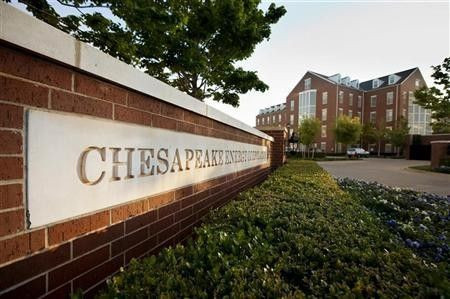Fracking Innovator Chesapeake Energy Files For Bankruptcy Protection

KEY POINTS
- Year-to-date through Friday, Chesapeake shares plunged by 93%
- In its restructuring, Chesapeake expects to eliminate about $7 billion in debt
- Upon exiting from bankruptcy, Chesapeake will operate at a drastically lower capacity
Chesapeake Energy (CHK), one of the most prominent companies engaged in the development of shale gas, voluntarily filed for bankruptcy protection on Sunday as it could no longer cope with low energy prices amid the pandemic.
Burdened by some $9 billion in debt, the company had warned in May that it had doubts about its survival.
Year-to-date through Friday, Chesapeake shares plunged by 93%.
In its restructuring, Chesapeake expects to eliminate about $7 billion in debt.
Chesapeake has obtained $925 million in debtor-in-possession financing that will allow the company to sustain operations during the bankruptcy proceedings. The company has also secured an agreement in principle for $2.5 billion in debt financing from some lenders upon its emergence from bankruptcy, in addition to a backstop commitment for $600 million in new equity.
Two of Chesapeake’s largest creditors, investment management firm Franklin Resources and financial services corporation Fidelity, will be among the dominant equity holders after the company restructures.
Upon exiting from bankruptcy, Chesapeake will operate at a drastically lower capacity, with a few gas rigs and no oil rigs.
“We are fundamentally resetting Chesapeake’s capital structure and business to address our legacy financial weaknesses and capitalize on our substantial operational strengths,” said CEO Douglas Lawler. “By eliminating approximately $7 billion of debt and addressing the legacy contractual obligations that have hindered our performance, we are positioning Chesapeake to capitalize on our diverse operating platform and proven track record of improving capital and operating efficiencies and technical excellence. With these demonstrated strengths, and the benefit of an appropriately sized capital structure, Chesapeake will be uniquely positioned to emerge from the Chapter 11 process as a stronger and more competitive enterprise.”
Founded in 1989, Chesapeake had 175 operating rigs across the U.S. at its zenith and a peak market valuation in excess of $37 billion. However, it took on massive debt to pay for its expansion – between 2010 and 2012 alone, the company spent $30 billion more in drilling and leasing than it actually earned from its operations. Chesapeake founder Aubrey McClendon was removed from the company in 2013, and three years later he was indicted on federal charges of conspiring to rig bids for oil and gas leases for a new business. He died soon after in a car crash. Upon Lawler’s succession, Chesapeake had almost a much debt as Exxon Mobil (XOM) and Chevron (CVX) combined. Lawler then started a campaign to sell off assets to reduce the company’s massive debt.
Lawler added: “Over the last several years, our dedicated employees have transformed Chesapeake’s business -- improving capital efficiency and operational performance, eliminating costs, reducing debt and diversifying our portfolio. Despite having removed over $20 billion of leverage and financial commitments, we believe this restructuring is necessary for the long-term success and value creation of the business.”
Chesapeake was a pioneer in the fracking boom -- a controversial method of extracting oil and gas that has been widely criticized by environmentalists.
Many companies sought to imitate Chesapeake’s huge success by starting fracking operations across parts of the American West as well as Pennsylvania. They also rang up large debts.
By 2015, as the fracking phenomenon started to crumble, Chesapeake reported a loss of $4.15 billion in the second quarter alone.
In the first quarter of 2020, Chesapeake incurred a loss of $8.3 billion.
© Copyright IBTimes 2025. All rights reserved.





















